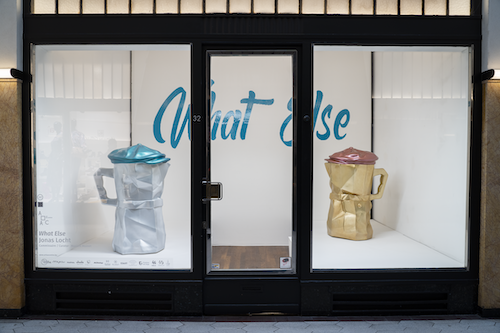-
The price is worth it
Acher
Boulevard d'Avroy 28-30
-
TO DO
Hilal Aydoğdu
100 Rue Saint-Gilles
-
V – 150360/1 p. 204, 265, 266
Dóra Benyó
1 Féronstrée
-
Fausse bonne nouvelle
Juan d’Oultremont
31b Rue de la Cathédrale
-
Et fouisse toujours on trouvera bien
Gaspard Husson
18 Rue de l'Etuve
-
La constellation du navire Argo
Sarah Illouz & Marius Escande
Hôtel de la Cour de Londres 40 Rue Hors-Château
-
One Line (… Better Than On – line!)
Marin Kasimir
31a Rue de la Cathédrale
-
Cityscape
Sarah Lauwers
29 Rue de l'Université
-
Traversées
Alexiane Le Roy
3 Rue de la Cathédrale
-
Mécanique d’un mur
Raphaël Maman
9 Passage Lemonnier
-
Vapeurs
Eva Mancuso
5 Rue Chéravoie
-
Don’t cry over spilllllled tears anymore
Francisca Markus
7 Rue Saint-Remy
-
Actions !
Maxence Mathieu
56 Rue Saint-Gilles
-
On ne peut rien faire d’autre que tenir debout
Élodie Merland
113 Rue de la Cathédrale
-
Travel Local, Buy Local
Oya
107 Féronstrée
-
Le vestiaire
Camille Peyré
85 Rue de la Cathédrale
-
22 empans et 1 palme
Leïla Pile
75 Rue Hors-Château
-
Chronique florale
Ionut Popa
101 Féronstrée
-
The Sunken Place
Louise Rauschenbach
4 Rue de la Cathédrale
-
Le temps d’une trace / La trace du temps
Florian Schaff Marvyn Brusson
1 Rue Courtois
-
Open closet archive 1995/2021/2023/2024
Bo Stokkermans
Passage Lemonnier, 37-39
-
Mutations x Urbaines
Adrien Mans Benjamin Ooms
17 Rue des Croisiers
-
Je m’organise…
Leen Vandierendonck
159 Féronstrée
-
Wer rettet die Welt
Paul Waak
16 Rue du Palais
-
Regarde… ce qu’il se passe à côté
Sculpture/Peinture B3 ESA Liège Melissa Andreia Alves ...
137-139 Féronstrée
-
Pauvre petit belge qui tremble
Paolo Gasparotto
25 Rue Saint Paul
Warning: Undefined array key "current_expo" in /var/www/clients/client3/web4/web/wp-content/themes/artaucentre/loop/vitrine.php on line 25

What Else
#10
Jonas Locht
Curator : Maxime Moinet
23742 Passage Lemonnier
Three common objects, reflections of our daily life: a coat rack and two Italian coffee makers. I start from these familiar objects and I operate, by molding, a transposition into an innovative material: an ecological water-based resin which has good resistance properties.
I create, during this transposition, an unreal, imaginary form, dragging reality into fantasy. Thus, the coffee maker is deformed, crumpled, and wears as a lid a Coppola cap, a rallying sign of the Italian mafia. The old coffee maker, now out of fashion, is styled in a way that has become “trendy”. Likewise, industry and its technologies are constantly innovating and in turn developing new forms of disguised mafia.
The enlargement of the object further accentuates the fantastic aspect and reduces it to a cancellation of its own functioning to give it a different view. This gigantism immediately confers a caricatural scope and a power of denunciation. This outrageousness diverts the familiar use of the coffee maker and the coat rack towards the grotesque and tries to deconstruct the little rituals that we have made sacred, by which we furnish the void of our life.
The current advertising discourse creates a sort of coffee mythology, calling on different Hollywood stars to represent the supernatural virtues of this drink.
The monumental coat rack parodies the place given to the protective angel during our travels and facing the fears they can cause.
The sculptures combine with each other in a comic atmosphere and merge in the treatment of color. They offer a desacralizing vision in a society where traces of the sacred are still significant and often used for commercial purposes.